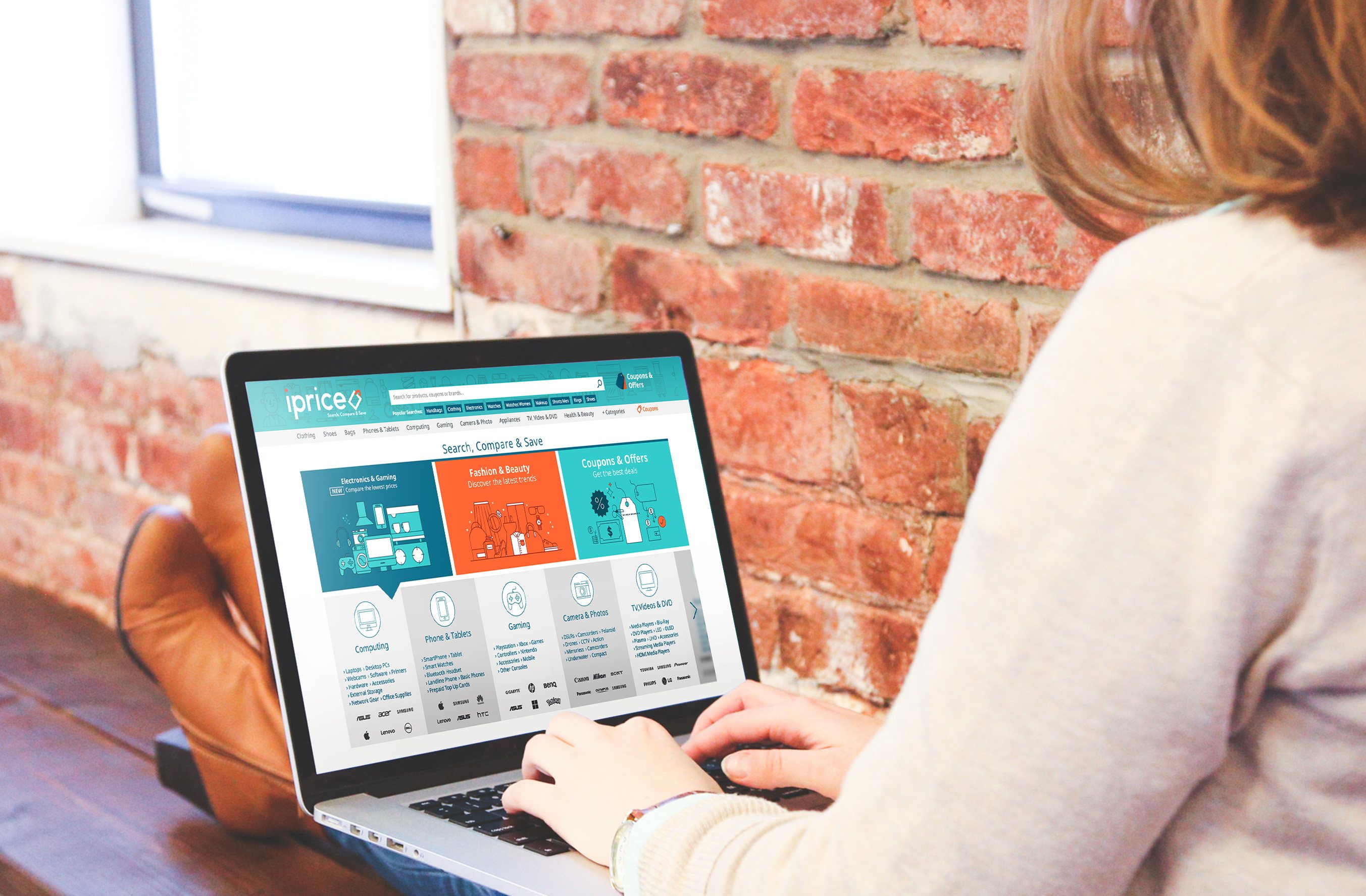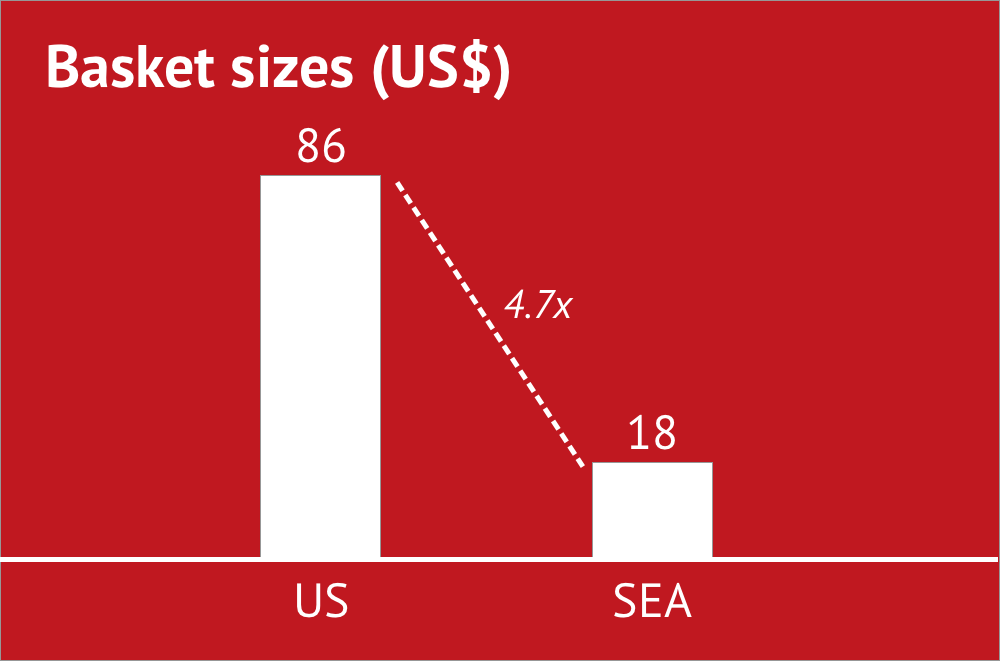
Photo credit: iPrice
Ecommerce in Southeast Asia is becoming a giant’s game, with Amazon and Alibaba loading up for a titanic struggle. But startups may still have room to play.
Malaysia-headquartered iPrice, which aggregates over 50 million SKUs of products from various shopping sites in one location, saw its site visits in November grow six times compared to the same month in the previous year.
While SimilarWeb puts iPrice’s most recent monthly visits at 1.79 million, its CEO David Chmelar claims the actual number is more than double of that.
“We have been able to grow entirely organically and are approaching profitability even faster than originally planned,” he added.
Investors seem impressed. They’re pumping in another US$4 million in a series A round of funding, led by Asia Venture Group and Venturra. Both reupped after joining previous funding rounds – likely a show of confidence in the startup.
iPrice was shy to disclose exact numbers though. Nonetheless, traffic drives revenue at the firm, so this is probably good news.
The company makes money through referral fees, so the more sales it drives to ecommerce sites like Lazada, the more money it makes. The top of its funnel grew sixfold, which translates to more conversions, assuming its conversion rate held steady.
Reunion party
The startup world is full of cliques, and iPrice is no different. Asia Venture Group managing director Kai Kux founded iPrice. Kai and Konstantin Lange, who just joined iPrice as its COO, co-founded Indonesian online grocer HappyFresh.
The Rocket Internet imprint is also strong here. Venturra founder Stefan Jung was the managing director of Rocket Internet Southeast Asia.
Another iPrice joinee, Matteo Sutto, was the director of marketing at Zalora, Rocket Internet’s prime fashion ecommerce site in Southeast Asia. Matteo, which founded now-defunct fashion startup Tate & Tonic, is now the startup’s senior vice-president of growth.

iPrice CEO. Photo credit: iPrice
Now, consider the fact that Alibaba acquired Rocket Internet’s Lazada. This gives iPrice an inroad into one of the world’s most successful ecommerce companies.
It’s a vital connection for the startup, which is all about securing favorable terms with its ecommerce partners.
Who really uses iPrice?
The rise of affiliate marketing startups like iPrice and ShopBack is a bet that ecommerce in the region will become mature enough for “support” services to thrive.
After all, iPrice can only prosper if Alibaba and Amazon succeed in Southeast Asia. Now the question is, who really is the core user of iPrice, and will they stick around?
David says that iPrice is fundamentally about helping ecommerce companies get more purchases. It’s one massive funnel for the ecommerce industry.
Unlike ShopBack, which caters to discount-hungry shoppers, iPrice takes an all-of-the-above approach with consumers.
“Going forward, there will be a layer – a metasearch platform of iPrice – and then there will be various front-ends which will be offered to consumers.” The new approach will allow iPrice to identify new opportunities and exploit them, he says, without divulging too much.

Photo credit: iPrice.
iPrice is doing fine right now as a one-stop destination for online shoppers looking for convenience and information like price comparisons and delivery speeds. Its next step is to cater to specific audiences and niches.
Part of that involves helping online publishers who want to turn their traffic into income.
It’s powering a coupons feature on popular Filipino news site Rappler. It also plans to allow publishers embed widgets so people can buy a product right after reading about it in an article.
While publishers in the region are slow to add affiliate marketing as part of their revenue model, it could catch on given the potential. The Wirecutter, a profitable and trusted gadget review site which has no external investors, relies heavily on affiliate marketing to make money. In October, it was acquired by The New York Times for a decent sum of over US$30 million.
Unicorn in the making?
iPrice’s traffic is a sign that it has found a market need. It’s solving a problem: fragmented Southeast Asian ecommerce. Only two out of 10 products in Southeast Asia can be purchased at the cheapest price from the largest ecommerce sites in each country, says David.
The fragmentation is especially bad in Thailand and Vietnam, where even small mom-and-pop stores are going online.
But with the weather forecast calling for “consolidation,” will the fragmentation decrease, and the need for iPrice reduce?
David doesn’t think so, citing Japanese company Kakaku as a role model. Founded in 1997, it’s almost synonymous with price comparison in Japan. It has made US$349 million in annual revenue and US$170 million in profit from its product aggregation, media, insurance, and restaurant directory businesses.
Kakaku made it work even though there were only three big competitors in Japan: Rakuten, Yahoo, and Amazon.
So, ecommerce players in mature markets will continue to invest in affiliate marketing. iPrice cites a Forrester study which says that over 80 percent of US advertisers devote more than 10 percent of their marketing budgets to affiliate programs. It’s unclear what the average is for Southeast Asian sites.
Ultimately, a bet on iPrice is a punt on the future value of ecommerce in Southeast Asia. Basket sizes of online purchases in the region, especially in countries like Indonesia and Vietnam, remain low for now:

Data from Google and Statista.
This limits how much iPrice extracts from each shopper. But how big can the startup get in the future? Here’s an estimate of current and potential affiliate marketing revenues in the entire Southeast Asian ecommerce landscape (methodology at the bottom):

So can iPrice ever reach a billion dollars in valuation within ten years? If the ecommerce growth projections hold up, it’s possible.
Gobi Partners, DMP, Econa, Starstrike Ventures, and iPrice CEO David Chmelar also joined the series A round.
Methodology for estimates: Current and 2025A market sizes (Purchases) obtained from Google’s report. 2025B market size obtained from here. Affiliate-driven purchases are a percentage of Purchases, at 7 percent for 2015 and 13 percent for 2025. 13 percent is the current figure of US ecommerce purchases driven from affiliate marketing. The assumption is that affiliate marketing is still in the early stages now, hence the 7 percent. Affiliate fees across all dates are pegged at 6 percent, which is roughly Amazon’s rates (between 2 percent and 10 percent).
This post Ecommerce site iPrice grew a scorching 6x, raises $4m from investors appeared first on Tech in Asia.
from Tech in Asia https://www.techinasia.com/iprice-series-a
via IFTTT
No comments:
Post a Comment